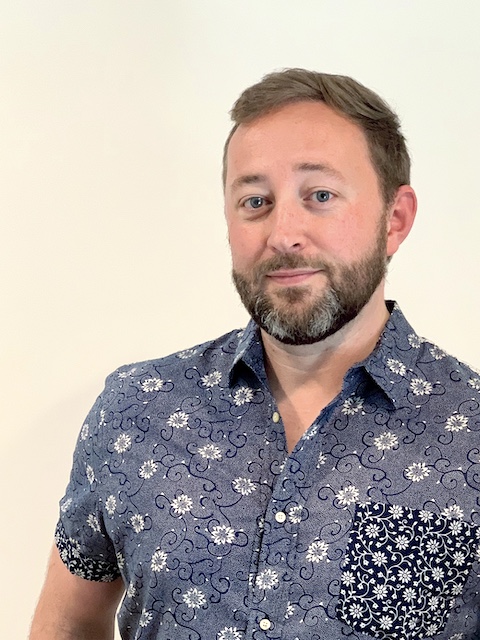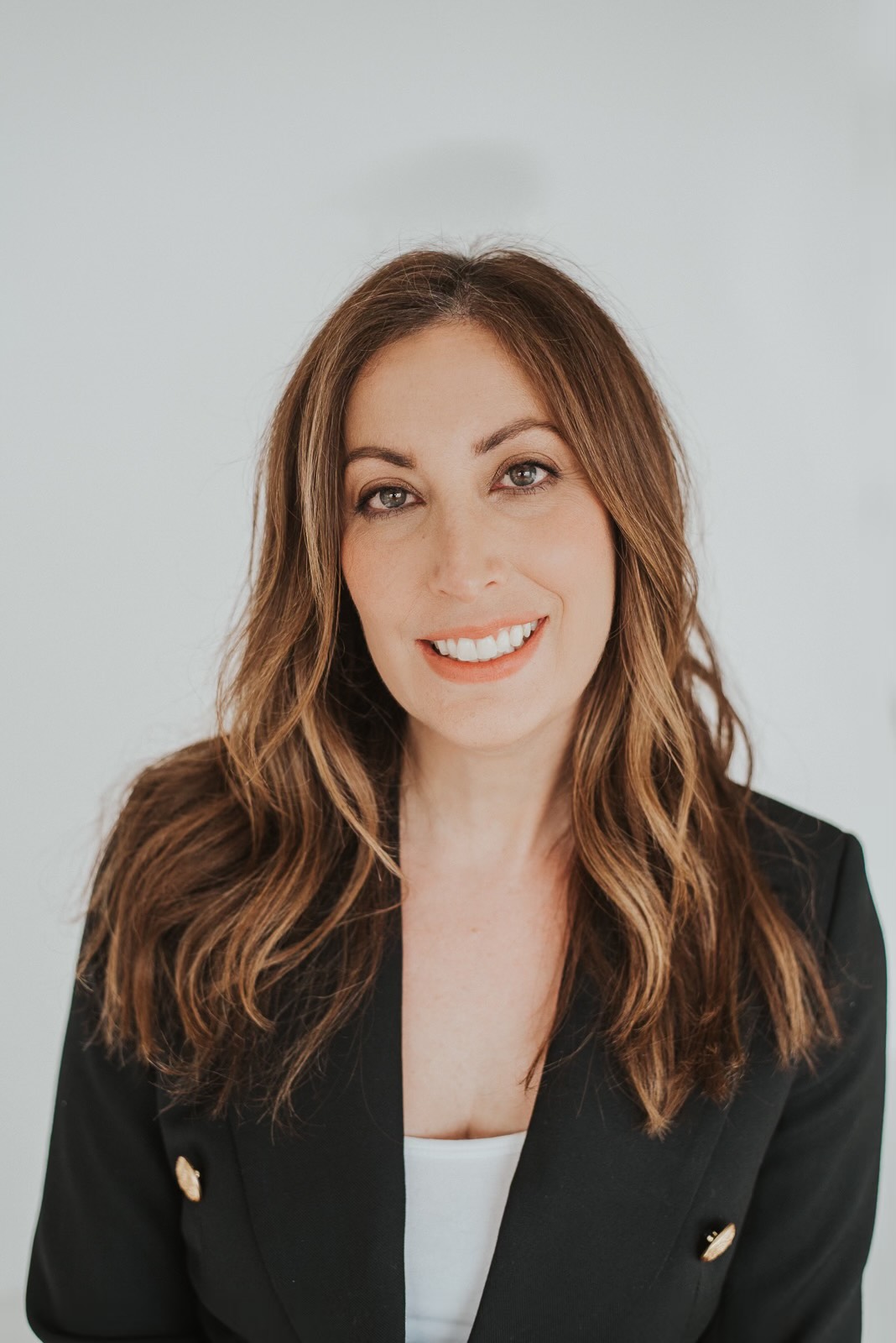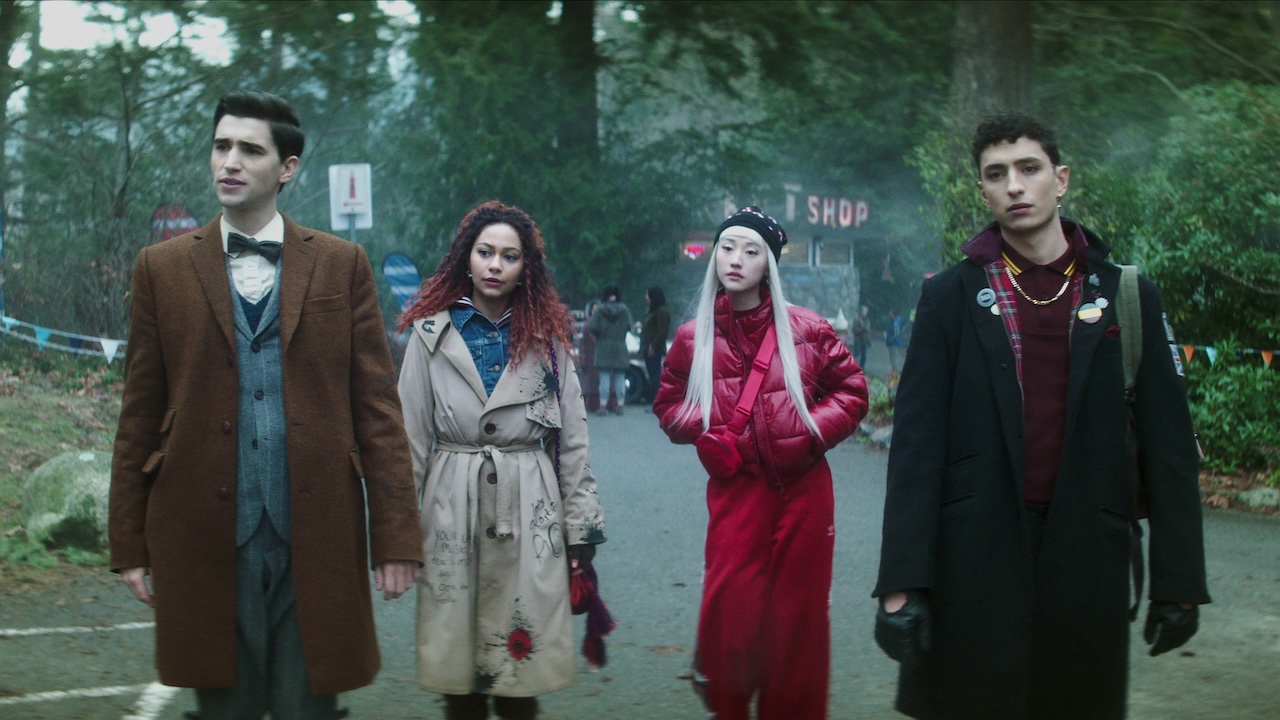Based on the beloved comic book characters for DC as part of The Sandman Universe by Neil Gaiman and Matt Wagner, Dead Boy Detectives tells the tale of Edwin Payne (George Rexstrew), “the brains” and Charles Rowland (Jayden Revri), “the brawn” behind the Dead Boy Detectives agency – for all your supernatural and paranormal detective needs.
Edwin and Charles are dead teenagers born decades apart, whose friendship and brotherhood grows during their death. Assisted by Crystal (Kassius Nelson) and her friend Niko (Yuyu Kitamura), they embark on a series of thrilling adventures.
Creator Steve Yockey (The Flight Attendant) and showrunner Beth Schwartz (Sweet Tooth, Arrow) spoke with Creative Screenwriting Magazine about translating the essence of the comic books into an eight-part television series.
“I like creating television that’s emotionally grounded and then wrapped in spectacle. The comic book is an exploration of loss, regret, grief, and things that we’ll never have for not growing up. That was compelling to me because when I found the comic book, I was going through a period of loss in my life and it was really resonant with me. But it also is like a visual feast,” says Yockey. He wanted to address the emotional burden of Edwin and Charles without it being depressing.
You can write a dark story and then use humor and spectacle to make it fun – Steve Yockey
“The comic book looks like everybody involved in it was on acid. So, we decided to pitch this show as The Hardy Boys on Acid,” quips Yockey.

Steve Yockey
Beth gravitated towards a different aspect of the comic. “For me, it was about the friendship between the two boys because it was built on the loss of not being able to grow up and miss out on adult life. It’s so tragic, but at the same time, their friendship makes up for it.”
“You have this bitter sweetness to every story and every episode. That was our North Star. It couldn’t be too bitter without having a little bit of sweet, and it couldn’t be too sweet without having a little bit of bitter. I just love that kind of tone.”
Adapting The Comics
Yockey and Schwartz planned the series beginning with a case of the week structure while capturing the thematic essence of the comics. “The comics can get very philosophical, but also trippy,” muses Yockey.
“We’ve included things such as the boys backstories, how they came to be together, and Crystal’s backstory. But a lot of it is re-appropriation of things from the comic books or reinvention of things from them.” The subtle references to the comics will be appreciated by their fans and non fans alike.
Beth Schwartz is more pensive about the comic book adaptation process. “There’s no way you can recreate the IP identically. The media don’t translate the same way. That shouldn’t be your goal. We’re just taking the essence, what we love about it and putting our own of spin into it.”
When Yockey first discussed the adaption with Neil Gaiman, he mentioned that it was vital that certain characters in the comics be described in a certain way. Otherwise, Yockey was free to take the story in other directions. The Dead Boy Detectives appeared in The Sandman: Season of Mists and The Children’s Crusade, so there was plenty of fertile ground to search for prospective stories. Overall, Yockey and Schwartz strived to maintain a high degree of fidelity to the comics for which Gaiman praised them.
Genre
Pitching a TV series as The Hardy Boys On Acid makes it challenging to define a specific genre for Dead Boy Detectives. “It’s all over the place, which I love because you can’t put it exactly in one box. It has a little bit of something for everyone,” says Schwartz. There are heavy elements of paranormal, but also elements of YA/ coming of age. There are darker tones to appeal to horror fans and some light-hearted elements of buddy comedy.
Steve Yockey describes Dead Boy Detectives as “a darkly comedic horror mystery show.” Despite the eclectic cocktail of genres, the show can only work when each episode is built around Charles and Edwin’s rich friendship.

Beth Schwartz
Steve created the show and wrote the pilot which was shot by Greg Berlanti’s production company. At that point, Beth Schwartz was suggested as a great partner. She watched the pilot and read the series documents that he wrote and soon, they collaborated.
Yockey and Schwartz best describe their working relationship as partners. They attended to all aspects of the show from scripts through to production. “We’re also responsible for making sure the show has a unified voice and time,” states Schwartz.
Meet Charles and Edwin
The boys bond through their shared trauma of dying as teenagers. This galvanizes their friendship because they have such a unique perspective on life and death.
“They choose each other. If either one of these boys decides that they’re done and moves on to the afterlife, they won’t ever see each other again,” notes Steve.
The structure of the show is unique – there’s the procedural aspect as well as the ongoing mystery of how they were killed.
The case of the week is very satisfying, but also there needed to be a mystery to pull us through and anchor the show – Beth Schwartz
“The mystery of how they died is an emotional mystery to explain their backstory, how they became the way they are, how they connected, and how their friendship started. We also added another layer of ongoing mystery, which is our Big Bad, which we call our witch character,” adds Beth.
The introduction of characters like the Night Nurse (Ruth Connell) also add to the mystery and the colorful world-building of the show. Dead Boy Detectives is also layered with additional mysteries and storylines such as Jenny’s (Briana Cuoco) secret admirer and Niko’s (Yuyu Kitamura) prickly relationship with her estranged mom.
“We’re just scratching the surface in Season one of how big this world is and all the rules and the characters in it,” says Beth.
Yockey also mentions the necessity of needing an overarching story “that pulls you through.” A mystery is solved each week and the emotional mystery pulls you into the next episode and eventually, to the end of the season. “I’m not shy about dense storytelling and I’m going to pack every minute of every episode,” says Steve.
Each episode has its own distinct tone and theme. “That brings that episode to life. We have a cute gross horror episode followed by a haunted house, a grizzly and very graphic episode, followed by a sort of romantic, almost gothic episode.” This allows Steve and Beth to assign scripts to the writers based on their strengths.
The series starts in certain tone and progressively becomes darker as you ease the audience into the season.
“Once the audience gets through episode three, which is a cliché of streaming, hopefully they’re going to understand the extent of tonal variety and the types of horror. We shouldn’t be trying to make these things factory models,” states Steve.
Inside The Writers’ Room
There were ten people in the writers’ room including Beth and Steve.
“We have an open writers’ room so that our support staff is welcome to sit in and participate. It’s a really good learning experience for them and for our younger writers as well. The room had a variety of levels, a variety of backgrounds, a variety of sexual orientations and genders. It was a real mixed bag and that’s by design,” declares Yockey.
“We had a charmed experience in terms of breaking the stories because we knew this is the romantic horror episode or this is the cosmic horror episode. Then we would hand it over to the writer and we would let them lead the story break in the room.” Steve Yockey and Beth Schwartz believe in empowering writers which will become tomorrow’s showrunners.
